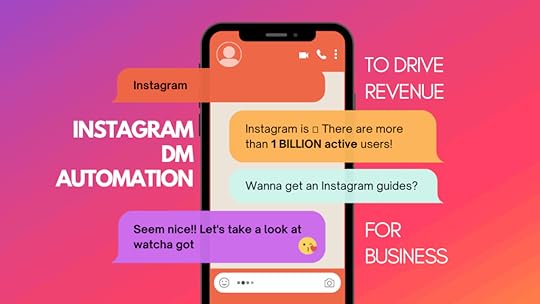Mohit Tater's Blog, page 37
June 25, 2025
The Essential Health Insurance Guide for First-Time International Residents and Expats

If this is your first time living in another country, you already know it’s not just about a new address. It’s the in-between moments waiting on documents, figuring out unfamiliar systems, and trying to feel stable when everything around you is in motion.
There’s one area people often put off until the last minute and that’s health insurance. Not because it’s something you’ve ignored but because it’s the kind of thing that feels too big to tackle at once. You might not know where to start. You might assume you’ll be fine. Or you just hope nothing goes wrong. But not having the right coverage becomes more than a hassle if it does. It becomes a burden that follows you.
This isn’t about scare tactics. It’s about being prepared so you’re not caught off guard in a country that doesn’t know you yet and doesn’t owe you much without a policy to back you up.
Why Health Coverage Has to Come FirstIt’s easy to think you’ll figure out care once you arrive. But in many places, especially the US, healthcare isn’t something you can wing. Hospitals may ask for proof of insurance before treatment begins. Even emergency rooms can send you home with a bill that would drain most savings accounts.
You won’t be covered under public healthcare systems if you’re not a citizen or permanent resident. And no, showing up with good intentions won’t make you an exception. That’s not how these systems work.
Do you know what’s harder? It’s that medical needs don’t wait on you. A fall. A fever that won’t break. A prescription you didn’t think you’d need again. When something happens, there’s no buffer. It’s just you, your situation, and the documents you do or don’t have.
Insurance doesn’t just pay for services. It opens doors. It tells providers, “This person is covered. Go ahead.” Without that, you cannot convince a system to care for you when it’s not built to.
What Kind of Plan Are You Actually Looking For?Light coverage plans are meant if you’re staying abroad for the short term. But you’re not just passing through. You’re planting roots, even if only for a year. That calls for a distinct type of aid.
You need a long-term expat plan. Something that covers more than emergencies. You’re looking for coverage that matches how you live daily, not just where you happen to be. That includes doctor visits, prescriptions, diagnostic tests, and inpatient care. Some plans also offer add-ons for dental or vision, depending on your situation and how settled you expect to become.
Also, check whether your insurance will act as primary or secondary coverage. With a primary plan, your provider handles everything directly.
With secondary, you’re expected to have another policy that pays first. That might not sound like a big deal now, but it matters when you’re sick and trying to make a claim.
And if your life stretches across more than one country or you’re unsure where you’ll end up next, don’t assume all plans work everywhere.
Regional limits can sneak up on you unless you check ahead.
What to Actually Look For in a PlanIgnore the marketing promises. Focus on what the policy actually delivers.
You want coverage for everyday care, such as local clinics, general practitioners, and routine lab work. If you can’t afford to pay out of pocket every time you need an antibiotic or a scan, your plan must step in.
Check if it includes hospital stays and specialist referrals. Accidents and diagnoses rarely happen with notice, and you don’t want to find out you’re underinsured while lying in a hospital bed.
Also, look at the safety net features. Does it cover emergency evacuation if you’re in a place without adequate care? Can you return to your home country for treatment under repatriation rules? These aren’t just perks. They’re the fallback when local care can’t meet what’s needed.
If you’ve been managing an ongoing health issue, ask whether your condition is covered. Some plans only support new diagnoses. Others give broader coverage. Don’t assume, check. It’s worth a phone call or email before you enroll.
And if you’re relocating with kids or a partner, make sure your plan allows you to include them without restrictions that don’t make sense for your setup.
How to Decide on the Right OneThis isn’t about picking the cheapest plan. It’s about choosing the one that won’t let you down.
Start with the basics. How long are you staying? Some countries require proof of insurance within days of entry. Others won’t let you complete registration without it. The timeline can affect whether your coverage is accepted when you arrive.
Next, think about your real needs, not the ideal version of yourself. Still, the one who forgets refills, books appointments late, or travels between cities. Does the plan still work in those scenarios?
Check how support works. Will someone answer when you call from a different time zone? Is help available in your language? Can you find providers near your new home, or are you left digging through PDFs and hoping for the best?
And don’t wait until the week you leave. Some plans take time to activate. Others require documents you won’t have on hand in a rush. The earlier you apply, the smoother your first few months abroad will be.
If the US. Is Part of Your MoveThe US healthcare system is not built for people figuring it out on the fly. Care is expensive, even for citizens. For ex-pats, the margin for error is thinner.
Without a valid plan, you’re expected to cover every cost, from urgent care to prescriptions. Hospitals can deny non-emergency services if your insurance isn’t verified. Even immigration processes now ask you to prove you’ll have insurance within 30 days of entry in many cases.
That’s why expats moving to the US often rely on providers that understand the system. Plans can offer wide hospital access and reps who can walk you through confusing claims or bill disputes. If your plan doesn’t include help with U.S.-specific requirements, you’ll feel it fast and painfully.
If you’re unsure where to start, explore US health insurance for expats. Some providers are built for this exact gap, and the kind of scope can spare you from the stress that catches so many expats off guard.
After You’re Covered: Stay ReadyOnce your plan is active, treat it like something you’ll need, not something you hope to avoid.
Keep all your documents somewhere easy to grab. Save them offline. Print them if needed. Emergencies rarely wait for you to find good Wi-Fi.
Before anything happens, know where to go. Which hospitals are nearby? Do they follow your plan? Can you reach your provider through a helpline or care finder? You don’t want to learn this under pressure.
Keep your provider updated if your address changes or you move across regions. It affects what’s covered.
And every so often, just stop and review. Is this plan still working for how you live? If not, adjust. Living overseas changes. What worked last year may not hold up tomorrow. Your health plan shouldn’t be either.
Final ThoughtsHealth insurance isn’t exciting. It’s not the part of your move you’ll talk about over dinner. But it’s the thing that quietly holds everything together when something breaks down.
The plan doesn’t have to cover everything. But you need a reliable one. One that works where you are, with the life you’re actually living, not the version you imagined at the start.
Whether you’re moving for work, study, or family, take the time to choose coverage that won’t leave you guessing when the stakes are high. If the US is on your route, don’t leave it to chance. Plans focused on expat needs can help you avoid the silent risks others walk into without knowing.
Let this be one decision you don’t have to second-guess later.
The post The Essential Health Insurance Guide for First-Time International Residents and Expats appeared first on Entrepreneurship Life.
Make1M.com Millionaire Life: Build Wealth and Live Luxuriously
Make1M.com represents a unique approach to wealth building that goes beyond traditional financial education. This platform operates on a dual mission: helping users achieve their first million dollars while simultaneously teaching them how to embrace and enjoy luxury living. Unlike conventional wealth-building platforms that focus solely on accumulation, Make1M.com recognizes that money is ultimately a tool for creating the lifestyle you desire.
What sets this platform apart is its innovative combination of practical financial tools, mindset training, and luxury lifestyle access. Rather than treating wealth and luxury as separate pursuits, Make1M.com integrates them into a cohesive journey where financial milestones unlock corresponding lifestyle upgrades. This approach acknowledges that motivation often comes from having compelling reasons to pursue wealth beyond mere numbers in a bank account.
The Vision Behind Make1M.com Millionaire Life
The platform emerged from a fundamental belief that wealth should serve as a vehicle for freedom, style, and personal fulfillment. The founders recognized that many people struggle with money not because they lack the technical knowledge to earn it, but because they haven’t connected their financial goals to meaningful lifestyle aspirations.
This philosophy challenges the traditional “delayed gratification” approach to wealth building. Instead of asking people to sacrifice everything today for a nebulous future payoff, Make1M.com advocates for strategic luxury integration throughout the wealth-building journey. The target audience includes aspiring entrepreneurs, dedicated wealth builders, and lifestyle seekers who refuse to choose between financial success and living well.
The platform’s approach recognizes that luxury, when pursued strategically, can actually accelerate wealth building by providing powerful motivation, expanding professional networks, and creating valuable assets.
ProcurementNation.com Shipping: Enhance Efficiency and Streamline Your Logistics
Make1m.com Millionaire Life
Living the “make1m.com Millionaire Life” is about more than just hitting a financial milestone—it’s about embracing a mindset and lifestyle that reflects success, abundance, and purposeful growth. The platform make1m.com is crafted for dreamers and doers who aspire to earn their first million while also building a life of luxury, freedom, and influence. From high-end travel experiences to investment strategies and business hacks, the millionaire life showcased on make1m.com is an inspiring blend of hustle, smart choices, and elevated living.
This concept isn’t just about flaunting wealth; it’s about creating a life on your terms. The make1m.com Millionaire Life covers everything from mindset coaching and personal branding to luxury fashion, tech, and cars—essentials for anyone crafting their own success story. Whether you’re a budding entrepreneur or already on your millionaire journey, the site serves as a visual and educational blueprint to turn aspirations into achievements while enjoying every bit of the journey.
What Make1M.com Offers Wealth-Building Education
Wealth-Building EducationThe educational foundation of Make1M.com covers multiple proven wealth-building strategies. The course catalog includes comprehensive programs on entrepreneurship, focusing on identifying opportunities and scaling businesses efficiently. Investment education covers everything from stock market fundamentals to real estate and alternative investments.
E-commerce training provides step-by-step guidance for building online businesses, while freelancing courses teach high-value service delivery. Beyond tactical skills, the platform emphasizes developing millionaire mindsets through webinars, one-on-one coaching sessions, and detailed case studies of successful wealth builders.
Personal finance guides address budgeting, debt elimination, and savings optimization, ensuring users have solid financial foundations before pursuing aggressive wealth-building strategies.
Business ToolsMake1M.com provides practical tools that transform abstract goals into actionable plans. ROI calculators help users evaluate potential investments and business opportunities with precision. Budget and savings planners ensure spending aligns with wealth-building objectives while maintaining lifestyle standards.
The millionaire goal tracker breaks down the journey from current financial position to seven-figure net worth into manageable milestones. Digital blueprint creators allow users to map their specific path, whether through business ownership, investing, or hybrid approaches.
These tools integrate luxury planning, helping users understand exactly how much wealth they need to afford specific lifestyle upgrades without derailing their long-term financial security.
Personalized StrategyThe platform begins with comprehensive goal-based assessments that evaluate current financial position, risk tolerance, time horizon, and lifestyle aspirations. Based on these factors, Make1M.com creates tailored plans that map the journey from wherever users start to their first million.
For someone starting with $10,000, the plan might emphasize high-growth business opportunities, while someone with $100,000 might focus on strategic investing and business scaling. The platform recognizes that the path from $100K to $1M requires different strategies than the journey from zero to $100K.
Scaling methods for digital businesses receive particular attention, given their potential for rapid growth with relatively low capital requirements.
5StarsStocks.com: Your Path to Stock Market Success
The ‘Luxury’ Side of Make1M.com
Make1M.com Luxury, as featured on Coruzant, represents the platform’s recognition that luxury plays a crucial role in successful wealth-building journeys. This isn’t about frivolous spending or materialistic display—it’s about understanding how luxury experiences and assets can motivate sustained effort, facilitate valuable connections, and even appreciate in value.
The integration of luxury into wealth building serves multiple purposes. First, it provides powerful motivation by making abstract financial goals tangible and emotionally compelling. Second, luxury purchases often create networking opportunities with other successful individuals. Finally, certain luxury items can serve as stores of value or even appreciating assets.
This approach transforms the wealth-building journey from a series of sacrifices into an exciting progression of lifestyle upgrades earned through financial achievement.
Luxury Offerings and Categories High-End Products & Lifestyle Assets
High-End Products & Lifestyle AssetsMake1M.com curates selections of luxury goods that balance enjoyment with investment potential. The watch collection focuses on timepieces from established manufactures known for value retention. Vehicle recommendations emphasize models with strong resale values or collectible potential.
Real estate guidance covers luxury properties in appreciating markets, helping users understand how to buy homes that serve as both lifestyle upgrades and investment vehicles. Yacht and aircraft selections consider usage patterns, maintenance costs, and depreciation schedules.
Exclusive guides teach users how to evaluate luxury purchases beyond their immediate appeal, considering factors like authenticity, condition, provenance, and market trends.
Luxury Travel & ExperiencesThe platform’s travel offerings integrate milestone celebrations with wealth-building achievements. Private jet access becomes available for users reaching specific financial benchmarks, while luxury cruise partnerships offer exclusive rates for platform members.
Five-star getaway packages are structured as rewards for achieving quarterly or annual financial goals. This approach ensures that luxury experiences enhance rather than undermine wealth-building efforts.
Lifestyle travel planning helps users budget for extraordinary experiences while maintaining progress toward larger financial objectives.
Luxury as an InvestmentPerhaps most importantly, Make1M.com educates users on treating certain luxury goods as investment vehicles. Rare watches, classic cars, fine art, and vintage wines can appreciate significantly over time while providing enjoyment during ownership.
The platform provides detailed analysis of collectible markets, helping users understand which categories offer the best combination of enjoyment and appreciation potential. Resale insights cover optimal timing, condition preservation, and market positioning for maximum returns.
This approach allows users to satisfy their desire for luxury while building wealth through asset appreciation.
How to Login Monday.com? Everything You Need to Know
Wealth + Lifestyle SynergyMake1M.com’s core innovation lies in its systematic integration of wealth milestones with lifestyle upgrades. Rather than viewing luxury as something to pursue after achieving wealth, the platform treats strategic luxury purchases as rewards that fuel continued effort.
The progression might start with a $10,000 milestone unlocking a luxury weekend getaway, while $100,000 enables a luxury vacation or high-end watch purchase. Reaching $500,000 might justify a luxury vehicle, with the million-dollar milestone opening access to real estate or investment-grade collectibles.
This system creates positive feedback loops where lifestyle improvements provide motivation for the next wealth-building phase. The key insight is that people work harder and more consistently when they have compelling reasons that extend beyond abstract numbers.
Credibility and Community FeedbackThe Coruzant article describing Make1M.com Luxury praised the platform’s aspirational yet grounded approach. Rather than promoting unrealistic get-rich-quick schemes, the platform provides realistic timelines and proven methodologies while maintaining focus on lifestyle integration.
Social proof comes from detailed testimonials showing users’ progression through various wealth-building stages. Success stories highlight both financial achievements and lifestyle improvements, demonstrating the platform’s dual mission in action.
Transparency in methods and realistic result expectations help build trust with users who have been disappointed by overhyped wealth-building programs in the past.
Platform Access & PricingMake1M.com operates on a tiered access model that accommodates users at different financial starting points. Free access includes basic educational content, goal-setting tools, and community participation. This allows users to evaluate the platform’s approach before making financial commitments.
Premium memberships unlock advanced courses, personalized coaching, and luxury purchase guidance. Pricing scales based on the level of support and exclusivity desired, with concierge services available for high-net-worth members.
Luxury membership tiers include exclusive deals on high-end purchases, private event access, and direct relationships with luxury goods dealers and service providers.
How to Get Started on Make1M.comBeginning your journey requires completing a comprehensive assessment that evaluates current financial position, goals, timeline, and lifestyle aspirations. This information forms the foundation for your personalized wealth-building strategy.
The platform helps users choose their optimal millionaire path based on their skills, interests, and risk tolerance. E-commerce might suit someone with marketing skills, while service-based businesses could work better for professionals with specialized expertise. Investment-focused strategies appeal to those with existing capital and patience for compound growth.
Critical to success is learning how to integrate luxury goals without derailing financial progress. The platform teaches users to view luxury purchases as investments in motivation and assets rather than expenses that reduce wealth-building capacity.
Alternatives to Make1M.comRich Dad Coaching focuses primarily on real estate investing and business ownership but lacks the luxury lifestyle integration that motivates many users. While the education is solid, the approach can feel austere compared to Make1M.com’s balanced methodology.
WealthFit provides comprehensive financial education with strong investment components but doesn’t address the lifestyle aspects that make wealth meaningful. Their approach is more traditional and may not resonate with users seeking immediate lifestyle improvements.
Masterclass offers luxury lifestyle design courses from various experts but lacks the systematic wealth-building education needed to afford such lifestyles. The content is inspiring but not necessarily actionable for building wealth.
Make1M.com’s strength lies in combining all these elements—wealth building, investment education, and luxury lifestyle design—into a cohesive system that addresses both the how and why of becoming wealthy.
Should You Use Make1M.com?This platform works best for individuals who want both financial success and lifestyle enhancement. If you’re motivated by the prospect of earning luxury experiences and assets while building wealth, Make1M.com’s approach will likely resonate strongly.
The platform’s strengths include actionable wealth-building plans that don’t require users to sacrifice all enjoyment during the accumulation phase. Visual luxury goals provide powerful motivation that keeps users engaged during challenging periods. The motivation-driven design acknowledges psychological realities that pure financial education often ignores.
Potential drawbacks include costs that may be prohibitive for complete beginners with limited resources. Additionally, users need significant discipline to maintain focus on practical wealth-building while being exposed to attractive luxury options.
The platform works best for individuals with some existing income and assets who want to accelerate their wealth building while beginning to enjoy lifestyle improvements immediately.
FAQsWhat is the main goal of Make1M.com?
The platform aims to help users achieve their first million dollars in net worth while teaching them how to strategically incorporate luxury experiences and assets throughout their wealth-building journey.
Is Make1M.com Luxury a separate product?
Make1M.com Luxury is an integrated component of the main platform, not a separate service. It represents the lifestyle and luxury education elements that complement the wealth-building tools and strategies.
How long does it take to earn $1M?
Timelines vary significantly based on starting point, chosen strategies, and execution consistency. The platform provides realistic projections ranging from 5-15 years for most users, depending on their circumstances and commitment level.
Are luxury goods good investments?
Certain luxury categories can appreciate in value, particularly rare watches, classic cars, fine art, and collectibles. However, the platform emphasizes that luxury purchases should provide enjoyment even if investment returns disappoint.
What’s the average cost to join?
Basic access is free, while premium memberships range from monthly fees for coaching and advanced content to higher-tier luxury memberships with concierge services and exclusive deals.
Final ThoughtsMake1M.com transcends traditional wealth-building education by recognizing that money serves as a tool for creating meaningful life experiences. Rather than promoting an either-or approach to wealth versus lifestyle, the platform demonstrates how strategic luxury integration can actually accelerate wealth building by providing powerful motivation and valuable assets.
The post Make1M.com Millionaire Life: Build Wealth and Live Luxuriously appeared first on Entrepreneurship Life.
How to Invest in 2025 With an Unstable Economy and Not Lose Money

The global economy in 2025 is far from stable. Interest rates are fluctuating, inflation is unpredictable, and markets are reacting to every geopolitical tremor. Although sitting on the sidelines might feel safe, it can also lead to you missing out on opportunities.
Remember, this will not be the first time the world has experienced a financial crisis. The Great Recession of 2008 is a good example. Although it lasted for two years, at the end of it, investors like Warren Buffett, who held on, still earned billions in profit. In this article, we’ll break down the most effective ways to invest in 2025 without losing your money.
Smart Investment Tips in 2025Investing during economic uncertainty can feel like trying to find your footing in a storm. However, it’s not an impossible feat. Taking a smart first step means protecting your hard-earned money from unnecessary risks — this is the very foundation of wise investing.
Hence, it would be advisable to try every possible method to ensure the safest limb. One method involves learning the basic rules of any area and testing strategies in a risk-free environment.
Before jumping into the pool with real money, we recommend that you get in some practice first. In online gambling, for example, casinos offer slot demos, which are in fact free versions of the games and do not require your money. This is a great opportunity to see how the games play out, try out your strategies, and determine what works best for you. Look at it as your very own training ground, which in turn will build your confidence and your understanding of the risks before you decide to play with real cash.
As such, understanding where to put your money and how to protect it is more important than ever. Below are investment tips to make profits during an unstable economy:
Invest in Different AssetsDon’t put all your eggs in one basket, especially in a shaky economy. It is always advisable to spread your investment across various assets. This can help soften the blow in case one asset experiences rapid depreciation.
Prioritize Value Over SpeculationsSuccess this year won’t come from chasing trends, but from building a portfolio that can withstand uncertainty. As such, it is advisable not to invest based on speculation. This is likely to result in losses rather than profits. Instead, focus on investing in organizations with low debt and a consistent cash inflow. They usually have a better chance of recovering when the economy stabilizes.
Invest in Assets With Easy LiquidityAssets with easy liquidity are those that can be converted to cash at any time without significantly losing their price value. It is best to focus more on preserving capital than making returns. While your goal is to make profits, even in an unstable economy, ensure the assets can readily give you cash whenever you need it.
Start Small and Be ConsistentThe best time to invest in 2025 is now. Make it a habit to invest a fixed amount regardless of market performance. This strategy is a slow-and-steady approach to building wealth. It also helps encourage long-term investing discipline.
Regularly Review and Rebalance Your PortfolioWe are living in a fast-paced world of cryptocurrency and technology. What worked last year may not work today. As such, it is best to review and rebalance your portfolio periodically. Don’t hesitate to reinvest in underperforming (but promising) areas and take profits where needed. Ensure your portfolio is aligned with your risk tolerance and goals.
Invest in Yourself and Inflation-Proof AssetsOne of the smartest investments you can make in uncertain times is in yourself. Build new skills and earn certifications that can open doors to better-paying jobs or even side hustles that boost your income.
In addition, don’t overlook necessities. Investing in home upgrades for energy efficiency can save you money in the long term. It’s all about putting your time and money where they’ll grow, protect, and serve you down the road.
Limit Risky or Speculative BetsTempting as they may be, high-risk investments can be financial traps in an unstable economy. Assets like meme stocks, volatile cryptocurrencies, or highly leveraged ETFs might promise quick returns, but they’re just as likely to lead to financial losses.
It’s better to play the long game in uncertain times. If you’re curious about speculative markets, limit them to a small slice of your portfolio. You can even see it as your “fun money,” not your future. Always do your homework, set stop-loss orders, and don’t invest more than you can afford to lose.
Investment Options to Explore in an Unstable Economy
The success of your investment lies in what type of asset you choose to invest in. Therefore, it is best to familiarize yourself with the asset and make informed decisions before committing fully. The table below reveals some smart investment options to go for in an unstable economy:
Asset TypeWhy You Should InvestRisk LevelTreasury BondsNot affected by inflation and backed by the government.LowDividend StocksMaintains stability even in an uncertain economy and has consistent cash flow.MediumReal EstateOffers an attractive return on investment and has a hedge against inflation.MediumGold & CommoditiesGold, silver and oil have a historical track record of serving as a barrier to economic instability.MediumHigh-Interest SavingsPossesses easy liquidity and can serve for emergencies.LowGeneral Tips for a Safer InvestmentGenerally, when it comes to investing, especially in an unstable economy, emotions often go up. However, you shouldn’t let emotions influence your decisions at any point. You must always be in control and ensure you make smart moves to stay ahead. Below are general tips for a loss-free investment in an unstable economy:
Set realistic financial goals and stick to them.Understand your risk tolerance.Keep a 3 – 6 month emergency fund for your personal expenses.Avoid constantly checking on the performance of your investment to reduce anxiousness.ConclusionInvesting in 2025 offers valuable opportunities for those who are prepared. However, it comes with its challenges. This article has equipped you with everything you need to protect your wealth and position yourself for steady growth.
It’s not about chasing quick wins. Instead, focus on building a portfolio that can handle uncertainty. Even a shaky economy can’t stop you from moving forward financially if you use the right approach.
The post How to Invest in 2025 With an Unstable Economy and Not Lose Money appeared first on Entrepreneurship Life.
How Your Injuries Can Impact the Final Settlement Amount

California is a beautiful and popular state in the United States. It follows a fault-based system for car accidents, which means the driver responsible for causing the crash (or their insurance company) must pay for the resulting injuries and damages. This legal structure plays a major role in determining how accident claims are handled across the state.
After an accident, it’s normal to feel overwhelmed, especially when you’re dealing with medical bills, missed work, and physical pain. Understanding your rights and the factors that affect your compensation can make a real difference in your recovery.
If you’re searching for clarity on how much to expect from a car accident settlement in California, know that no two cases are the same. The type and severity of your injury, treatment costs, and emotional distress all influence the final outcome of your settlement.
That’s why it’s important to look at the key elements that influence your settlement, starting with the most critical one.
1. Type of InjuryThe nature and seriousness of your injury are major factors in calculating a fair settlement. Minor injuries usually lead to smaller payouts, while severe or long-term conditions can significantly increase the value of your claim.
Examples include:
Soft tissue injuries (e.g., whiplash) Typically heal quickly and result in lower settlements. Broken bones: They often require more extensive treatment, including surgery, which raises the claim amount. Head injuries: Even mild brain trauma can have lasting effects, leading to larger compensation. Spinal cord damage or paralysis: These life-altering injuries often result in some of the highest settlements.The more serious and lasting the injury, the more you may be entitled to receive.
2. Medical Expenses and Treatment DurationMedical costs are a central part of any personal injury claim. The longer and more involved your treatment, the higher your settlement may be.
Consider the difference:
Minor injuries: A brief hospital visit and medication may result in a smaller claim. Ongoing care: Physical therapy, diagnostic testing, surgeries, or long-term rehabilitation can significantly raise settlement value.Keep detailed medical records, bills, and doctor’s notes to support your claim and demonstrate the full impact of your injury.
3. Lost Wages and Reduced Earning CapacityIf your injury kept you from working, you can claim lost wages, including time off for treatment and recovery. In more severe cases, the injury may limit your ability to work in the future.
For instance:
A back injury could prevent a construction worker from returning to their physically demanding job. A permanent injury might reduce your overall earning capacity, which adds to your settlement calculation. 4. Pain, Suffering, and Emotional DistressCar accident settlements in California also consider non-economic damages, including:
Physical pain and discomfort Emotional trauma (e.g., anxiety, depression) Difficulty sleeping or relaxing Loss of enjoyment in everyday life or hobbiesThough these damages don’t come with receipts, they have a real impact. If your injury has disrupted your daily routine or emotional well-being, it deserves to be factored into your compensation.
5. Long-Term Effects and Permanent DisabilityInjuries that lead to permanent disability or long-term complications can drastically raise your settlement value. These cases often include:
Loss of mobility or limb Permanent scarring or disfigurement Chronic pain or the need for lifelong treatment Home modifications or assistive devicesCompensation may also cover future medical costs, ongoing therapy, or any structural adjustments needed for your home or vehicle.
ConclusionYour injury doesn’t just affect your physical health; it can disrupt your job, finances, emotional well-being, and future stability. When calculating car accident settlement in California, multiple factors come into play: injury severity, medical expenses, lost wages, pain and suffering, and long-term impact.
Serious injuries often lead to higher settlements, but to receive what you truly deserve, it’s important to keep detailed records, follow through with medical care, and consider consulting a personal injury lawyer. With the right support and preparation, you can secure the compensation needed to move forward with confidence.
The post How Your Injuries Can Impact the Final Settlement Amount appeared first on Entrepreneurship Life.
Top 7 Instagram DM Automation Workflows for Creators and Businesses

If you’re trying to grow on Instagram, you know how time-consuming it can be. Between replying to DMs, comments, sharing links, and running contests to keep your audience engaged, you’re most likely to run out of time.
In fact, 63% of full-time content creators experienced burnout last year, and a major reason is the nonstop pressure to stay available and answer every message. Instagram DM automation helps take that pressure off. It saves time, keeps you responsive, and lets you build stronger relationships with your audience, without constantly being tied to your inbox.
Here are five Instagram automation workflows that make it easier to keep up with your audience while you still enjoy showing up.
1. Turn Comments into ConversationsWhen someone drops a comment on your post, you typically reply and point them to your bio link, hoping they follow through. It can work, but it’s slow, and people don’t always go to your link.
With DM automation for Instagram comments, the whole process gets easier. When someone uses a trigger word in their comment, they automatically get a message with the information they’re asking for. That could be a link, a discount code, or a free download.
Creators use this type of Instagram DM automation to share resources or grow their email lists without chasing every comment. Businesses often use it to send product links or time-sensitive deals.
2. Connect Right After the FollowWhen someone hits the follow button, you can send them an automatic but friendly and personal message. If your account is growing, this is a great way to start conversations with new followers from day one.
Instead of tossing out a random link, you’re inviting your new followers to take a small step, which builds trust quickly. With the right Instagram DM automation tool, you can even set up a short welcome series to go out over a few days, giving new followers a better sense of who you are and what you offer.
Brands use it to offer a first-time discount. And for creators, it’s a way to drive traffic to a YouTube channel or build an email list without doing everything manually.
3. Manage Giveaways EasilyGiveaways and contests get about 3.5 times more likes and 64 times more comments than regular posts, which means more visibility without extra effort. Ask your participants to comment with a specific word to enter, and then send them a message with contest or giveaway details and a quick confirmation using Instagram DM automation. You can follow up later with a friendly reminder to share the post or tag a friend.
4. For Live Events and Launch SupportInstagram Live videos generate 10 times more engagement than regular posts and reach over 100 million users daily. So, if you’re going live on Instagram, launching something new, or running a limited-time offer, Instagram DM automation can take care of the legwork.
During the Live session, ask viewers to comment with a trigger word. As soon as they do, they’ll receive a direct message with the next step, whether that’s a sign-up link, a discount code, or a friendly reminder to check back later.
Once the Live wraps up, you can follow up with everyone who interacted. This kind of setup makes it easier to stay focused on the event without scrambling to send links or keep track of every request.
5. Create Personalized and Quiz-Style FlowsDMs often fill up with the same kinds of questions. Instead of answering the same thing over and over, you can set up an Instagram DM automation flow that walks people through a short menu or quiz.
In fact, 59% of consumers say personalized engagement based on past interactions makes them more likely to buy, so setting up these flows can also lead to purchases.
Based on their response, your followers will get a message that points them to the right product, service, or page. It works because it feels personal, even though it’s fully automated.
6. Customer Support in Your DMsIf you’re answering the same support questions over and over, Instagram DM automation can step in. You can set up quick replies for common questions like shipping times, return policies, or booking information.
This setup is helpful after hours or when your inbox starts to pile up. 76% of people expect a reply on social media within 24 hours, so having automated responses keeps your audience feeling supported.
When someone sends a DM, they get an instant reply with the information they’re looking for. And if the conversation needs a human touch, you can always jump in and reply directly.
7. Messaging with Tag-Based AutomationOne of the most useful features of Instagram automation is that it can sort your audience by interest. When someone replies to a giveaway or taps an option in a quiz, that action tells you what they’re interested in. You can tag them immediately and follow up later with offers, updates, or content that fits what they’re looking for.
No need for a complex setup or additional software. The right automation tool can turn your private messages into a simple way to keep track of who’s who, helping you stay organized and keep your messages relevant.
Wrapping It UpDM automation saves time and keeps your messaging consistent. Whether you’re a solo creator, part of a small team, or running a growing brand, these workflows are easy to set up and grow with.
Instagram DM automation tools like Stampede Social let you build drag-and-drop automation flows and set up keyword triggers for comments and replies. You also get access to campaign analytics and audience insights. Plus, you can run giveaways, track user-generated content, and even link DMs to QR codes to reach people.
Automate the repetitive stuff, free up your time, and stay focused on the content people follow you for.
The post Top 7 Instagram DM Automation Workflows for Creators and Businesses appeared first on Entrepreneurship Life.
Things You Shouldn’t Have to Tolerate at Work

Work is a big part of our lives. It’s where we connect with others, build skills, and work toward shared goals. For many, it’s more than just a paycheck; it’s a community. But sometimes, certain behaviors can make that environment feel uncomfortable or even hostile. Inappropriate comments or crossed boundaries damage the sense of professionalism that should exist.
Knowing which behaviors aren’t okay can help make work a better place. Everyone deserves to feel respected and heard. Calling out what shouldn’t be tolerated helps build a supportive environment, which can improve morale and how well people work together.
Physical and Verbal Misconduct Your Employer Can’t DismissUnwanted comments or physical contact at work can cause a lot of stress. It breaks down trust and team spirit. Suggestive or inappropriate remarks, even if disguised as jokes, make people feel uncomfortable and unsure of their place. When people stay quiet about these things, the workplace can start to feel isolating. Everyone has the right to a space that feels safe and respectful.
“A pattern of silence around harassment only deepens the harm,” says a sexual assault lawyer in Austin. “Addressing misconduct early protects both the individual and the workplace as a whole.” Employers have a duty to take complaints seriously. Ignoring problems doesn’t just hurt people—it puts the company at risk. Clear reporting channels and open communication help build a culture where people feel supported and heard.
Unrealistic Positivity That Silences Honest ConcernsToxic positivity can look like support on the surface but often shuts down real conversations. When constant cheerfulness is expected, real concerns about workload or team problems can be ignored. People might feel they have to hide their stress instead of sharing it, which keeps teams from growing and understanding each other. The pressure to always be upbeat can make honest conversations feel risky.
It’s healthier when people can admit they’re overwhelmed without being brushed off. Giving people space to be real helps build stronger relationships and more resilient teams. One helpful habit could be regular check-ins, where everyone can speak freely without fear of judgment.
Pushback for Setting Reasonable Personal BoundariesEveryone has different limits when it comes to their time, space, and energy. When boundaries are ignored or challenged, it creates stress. Employees should feel okay saying no—whether that means not answering messages after hours or skipping events that feel draining. If people are criticized for setting boundaries, it shows the workplace may not be supporting well-being, which can lead to burnout.
A workplace should support respect and understanding, giving people room to protect their energy. Offering breaks or being flexible with social plans can help everyone find a better balance. Encouraging people to honor each other’s limits can lead to happier, more productive teams.
Getting Erased While Others Get the CreditIt’s frustrating to watch personal effort disappear behind someone else’s spotlight. In many teams, visibility wins over actual contribution, and quieter workers often get pushed aside—even when carrying much of the weight. Motivation can fade quickly when recognition goes to volume instead of value, leaving capable people feeling invisible despite consistent effort.
Unfair credit divides teams, drains morale, and weakens collaboration over time. Recognition should include all kinds of input, from bold ideas to steady follow-through. A culture that values quiet consistency just as much as high-energy output gives everyone space to feel respected, motivated, and willing to contribute fully.
Humor That Targets People Instead of ProblemsJokes can either connect people or divide them. When humor makes fun of someone’s traits or struggles, it becomes mean-spirited. Such behavior breaks trust among coworkers and makes people feel left out. When people use humor to hurt, it creates tension and makes others afraid to show their true selves.
Keeping humor kind and respectful helps teams bond. Joking in a way that includes everyone, rather than picking on someone, builds trust. Having clear expectations around what kind of humor is okay helps everyone feel comfortable and included.
Respect at work isn’t a luxury—it’s the baseline. When harmful behavior gets ignored or honest voices are dismissed, trust begins to break down. People deserve space to speak openly, draw clear boundaries, and feel acknowledged for their efforts. Recognition shouldn’t depend on volume or visibility. Humor must never come at someone’s expense. When something feels wrong, that feeling is worth listening to. Speaking up takes courage, and so does listening without defensiveness. A healthier workplace allows room for mistakes, clarity, and care. It’s not about getting everything perfect, but about choosing decency over dismissal and making connection more valuable than control or appearances.
The post Things You Shouldn’t Have to Tolerate at Work appeared first on Entrepreneurship Life.
Personal Injury Lawyers: Your Guide to Legal Protection and Compensation After an Accident

Accidents can change lives in an instant. Whether you’re hurt in a car crash, a slip and fall incident, or due to medical malpractice, the aftermath can be overwhelming. Hospital bills, lost wages, emotional trauma, and long-term physical limitations can take a toll on you and your family. This is where personal injury lawyers step in. These legal professionals specialize in helping victims of accidents get the compensation and justice they deserve.
In this article, we’ll take an in-depth look at what personal injury lawyers do, the types of cases they handle, why hiring one is crucial, how to choose the right lawyer, and what to expect during the legal process.
What is a Personal Injury Lawyer?A personal injury lawyer is a type of civil litigator who provides legal representation to individuals physically or psychologically injured due to another party’s negligence, carelessness, or intentional wrongdoing. This area of law is known as tort law, which covers private or civil wrongs or injuries.
These attorneys aim to make their clients “whole” again by seeking monetary compensation for damages. Compensation may cover medical expenses, lost income, pain and suffering, property damage, and other losses.
Types of Cases Handled by Personal Injury LawyersPersonal injury law is broad and covers various types of accidents and injuries. Below are some of the most common cases personal injury lawyers handle:
1. Motor Vehicle AccidentsThis includes car, truck, motorcycle, bicycle, and pedestrian accidents. In 2023 alone, millions of people in the U.S. were injured in traffic-related incidents. Personal injury lawyers help victims determine fault, negotiate with insurance companies, and file lawsuits when necessary.
2. Slip and Fall AccidentsProperty owners have a legal duty to keep their premises safe. If you’re injured due to unsafe conditions like wet floors, poor lighting, or broken stairs, you may have a premises liability case.
3. Medical MalpracticeThese cases involve negligence by a doctor, nurse, hospital, or other healthcare provider. Common examples include misdiagnosis, surgical errors, and improper treatment.
4. Workplace AccidentsWhile workers’ compensation may cover on-the-job injuries, there are cases where you can sue a third party for negligence. Personal injury lawyers help navigate this complex area.
5. Product LiabilityIf a defective or dangerous product injures you, you may be entitled to compensation from the manufacturer or distributor.
6. Dog Bites and Animal AttacksOwners are often liable for injuries caused by their pets, especially if they knew the animal had aggressive tendencies.
7. Wrongful DeathWhen someone dies due to another person’s negligence, surviving family members can pursue a wrongful death claim to recover funeral expenses, loss of companionship, and other damages.
Why Hire a Personal Injury Lawyer?Many people wonder whether they need to hire a lawyer after an accident. The truth is, working with a personal injury lawyer can significantly increase your chances of receiving fair compensation.
1. Knowledge of the LawPersonal injury lawyers are well-versed in the statutes, case law, and procedural rules that apply to your claim. This knowledge is vital for building a strong case.
2. Negotiation SkillsInsurance companies often try to minimize payouts. Personal injury lawyers know how to negotiate effectively, using evidence and legal arguments to push for a fair settlement.
3. Investigation and Evidence GatheringExperienced lawyers work with accident reconstruction specialists, medical experts, and investigators to gather compelling evidence to support your claim.
4. Objective AdviceWhen emotions run high, it’s difficult to make sound decisions. A lawyer provides objective guidance and helps you focus on what matters most—your recovery and future.
5. No Upfront CostsMost personal injury attorneys work on a contingency fee basis, meaning you don’t pay unless you win your case. This makes legal representation accessible for most victims.
How to Choose the Right Personal Injury LawyerChoosing the right lawyer can make or break your case. Here are some tips to help you select a qualified personal injury attorney:
1. Experience and Track RecordLook for a lawyer who has handled cases similar to yours and has a history of successful verdicts and settlements.
2. SpecializationSome lawyers dabble in multiple areas of law. It’s best to hire someone who focuses exclusively on personal injury law.
3. ReputationOnline reviews, testimonials, and peer ratings can provide insight into a lawyer’s professionalism and success rate.
4. CommunicationA good lawyer keeps you informed throughout the process, explains your options clearly, and is available to answer your questions.
5. Free ConsultationMost reputable personal injury lawyers offer a free initial consultation. Use this opportunity to evaluate the lawyer’s competence and determine if you’re comfortable working with them.
The Personal Injury Claim ProcessUnderstanding what to expect during the personal injury claim process can make it less intimidating. Here are the typical steps involved:
1. Initial ConsultationYou meet with the lawyer to discuss your case. They evaluate the merits and explain your legal options.
2. InvestigationThe lawyer collects evidence such as medical records, police reports, witness statements, and expert opinions.
3. Filing a ClaimYour attorney submits a demand letter to the at-fault party’s insurance company, outlining the injuries and requested compensation.
4. NegotiationsMost cases are settled out of court. Your lawyer will negotiate with the insurance company to reach a fair agreement.
5. Filing a LawsuitIf negotiations fail, your lawyer may file a lawsuit and prepare for trial. While litigation can take time, it may be necessary to secure just compensation.
6. Trial and JudgmentIf the case goes to trial, a judge or jury will decide the outcome. Your lawyer presents evidence and arguments to support your claim.
Common Challenges in Personal Injury CasesEven with strong legal representation, personal injury claims are not without challenges:
Proving Liability: You must show that the other party was negligent and that their negligence caused your injury.Insurance Company Tactics: Insurers may delay or deny valid claims to protect their bottom line.Comparative Fault: In some states, if you’re partly at fault, your compensation may be reduced.Statute of Limitations: Each state has deadlines for filing personal injury claims, usually ranging from 1 to 3 years.Final ThoughtsIf you’ve been injured due to someone else’s negligence, a personal injury lawyer can be your greatest ally. They not only fight for your rights but also help you navigate a legal system that can be complex and intimidating on your own. From handling paperwork and negotiations to representing you in court, their job is to make sure you’re fairly compensated so you can focus on healing and rebuilding your life.
Don’t let insurance companies take advantage of your situation. Consult with a qualified personal injury lawyer as soon as possible after your injury—it could make all the difference in your recovery and financial future.
The post Personal Injury Lawyers: Your Guide to Legal Protection and Compensation After an Accident appeared first on Entrepreneurship Life.
Why Hiring a Car Accident Lawyer Improves Your Settlement

Did you know that insurance companies aim to settle claims for as little as possible—often before you even understand the full value of your damages? Many car accident victims walk away with far less than they deserve, simply because they didn’t have the right advocate on their side.
It’s tempting to think you can handle the situation yourself. Especially if the crash seemed straightforward or the injuries appeared minor at first. After all, people are often told they don’t need a lawyer to handle minor accidents.
But even seemingly simple cases can become complicated fast. Medical bills stack up. Insurance adjusters start asking loaded questions. And without legal experience, you might not even realize you’re being lowballed.
Hiring a car accident lawyer isn’t about making things more complicated—it’s about protecting your rights and ensuring you get what you’re truly owed. Read on to discover how the right legal support can significantly boost your settlement and safeguard your future.
How a Car Accident Lawyer Can Maximize Your SettlementWhen you’re dealing with the aftermath of a crash, the last thing you need is a battle with an insurance company. Yet that’s exactly what most victims face. Without legal experience or support, you’re often left vulnerable to tactics designed to minimize your compensation.
Insurance Companies Aren’t on Your SideNo matter how friendly an adjuster may seem, their goal is to protect the company’s bottom line—not your recovery. Insurance representatives are trained negotiators, and they know how to get you to settle quickly and for less.
A car accident lawyer levels the playing field. They understand how to interpret policy language, calculate damages accurately, and push back against bad-faith practices.
Understanding the Full Value of Your ClaimMost people think of repair bills and hospital visits when calculating their damages. But settlements often include much more, such as:
Lost wages and future earning potentialLong-term medical treatment and rehabilitationPain and sufferingEmotional distressLoss of enjoyment of lifeAn attorney knows how to account for these less obvious yet deeply impactful losses. That means you’re far more likely to receive a settlement that reflects the true cost of the accident.
Evidence Gathering and Legal StrategyBuilding a strong claim takes more than a police report. Lawyers gather evidence that strengthens your case, including:
Surveillance footage and dash cam videosWitness statementsExpert testimony (e.g., accident reconstructionists)Medical records and prognosis reportsHaving this level of documentation can make a massive difference during settlement talks. It shows insurers that you’re prepared to take the case to court if needed, which can motivate them to offer a fair settlement sooner.
Knowing the Law (So You Don’t Have To)State laws vary when it comes to fault, liability, and damages. Without legal guidance, you might unknowingly admit to fault, lowering your payout.
A seasoned car accident lawyer ensures your rights are protected and that legal timelines—like the statute of limitations—aren’t missed. In many states, you have just two years to file a personal injury claim. Miss that window, and you may lose your right to recover anything at all.
Negotiation Power and Courtroom LeverageMost personal injury claims are settled out of court—but they get there through tough negotiation. Lawyers are skilled negotiators who use legal leverage and evidence to push for higher payouts.
And if settlement talks break down? A lawyer can take the case to trial, where they argue your side before a judge or jury. This threat alone often encourages insurers to increase their offers to avoid a lengthy and costly court case.
Avoiding Common Mistakes That Cost You MoneyIt’s easy to make missteps after an accident—many of which can harm your claim. These include:
Admitting fault at the scenePosting about the crash on social mediaGiving recorded statements to insurance adjustersDelaying medical treatment or failing to follow upYour lawyer guides you on what to do—and what to avoid—so your case stays strong from the start.
Peace of Mind During a Stressful TimeRecovering from an accident is exhausting—physically, emotionally, and financially. When you have an attorney handling the paperwork, phone calls, and legal strategy, you can focus on healing.
You don’t have to figure it all out alone. From filing claims to negotiating fair settlements, your lawyer becomes your advocate, helping you move forward with confidence.
A Smarter Path to Fair CompensationNavigating a car accident claim on your own may seem manageable at first—but it often leads to undervalued settlements and unnecessary stress. Insurance companies have experience and legal teams on their side. You deserve the same level of protection.
Hiring a car accident lawyer doesn’t just improve your odds—it changes the entire process. From uncovering hidden damages to negotiating aggressively on your behalf, a skilled attorney ensures your settlement truly reflects what you’ve lost.
When your health, finances, and future are on the line, getting expert legal support isn’t just smart—it’s essential.
The post Why Hiring a Car Accident Lawyer Improves Your Settlement appeared first on Entrepreneurship Life.
When Bureaucracy Fails, Entrepreneurs Step In: The Private Sector’s Role in Public Crisis
 A Broken System Meets Growing Needs
A Broken System Meets Growing NeedsAcross the United States and much of the Western world, public systems are under increasing strain. From healthcare to housing, education to homelessness, the need is real and growing—but the responses are often too slow, too bloated, and too ineffective. Nowhere is this more visible than in California, where a recent state audit revealed that over $24 billion in taxpayer money was spent on homelessness programs over five years—with no measurable improvement. The scale of the issue is daunting, but perhaps more frustrating is the lack of clarity and accountability surrounding how the money was spent and what it achieved.
This is where many people begin to ask the hard question: If government systems can’t fix these problems, who can?
Entrepreneurs—especially those with a track record of building things from the ground up—are increasingly stepping into these gaps. People like Henry Mauriss, a lifelong entrepreneur and CEO of ClearTV, are showing that private-sector thinking can offer solutions where traditional bureaucracy falls short. With over 25 years of experience in branding, marketing, and operations, Mauriss has brought that same entrepreneurial mindset to philanthropic efforts aimed at helping the homeless. His belief is simple but powerful: when the system fails to deliver results, innovation must take over.
Government Can’t Move Fast EnoughThe biggest challenge with bureaucracy isn’t always bad intent—it’s poor execution. Public institutions are often limited by red tape, overlapping jurisdictions, and long approval cycles. They were built for stability, not speed. While that can be beneficial in some areas, it becomes a liability during crises or when rapid innovation is needed. When people are sleeping on sidewalks, or cycling through shelters with no long-term plan, the last thing they need is a years-long funding process or a convoluted reporting system.
Entrepreneurs, by contrast, are trained to think in lean cycles. They start small, test quickly, learn fast, and pivot when necessary. They are accountable not just to investors, but to outcomes. If the product doesn’t work, it changes. If the market shifts, the business adapts. This is a model that the public sector often fails to emulate—and it’s one of the reasons why private initiatives are now taking a more central role in addressing some of society’s biggest challenges.
Henry Mauriss understands this contrast well. His work in the private sector has taught him that resources mean nothing without results. He believes that just like a media company needs to deliver content that engages viewers, a social initiative must deliver tangible, trackable outcomes—meals served, people housed, lives changed. And if it doesn’t? It should be restructured or shut down, not propped up with more funding and less scrutiny.
Accountability Creates ProgressOne of the most dangerous outcomes of government inefficiency is the loss of public trust. When billions are spent with no clear impact, people grow cynical. Communities start to question whether any solution is possible. In that environment, even well-meaning programs face resistance.
Entrepreneurs, however, are hardwired for accountability. It’s how they survive. Every dollar has to stretch, every decision has to count, and every effort has to lead somewhere. In the world of startups and small businesses, there’s no safety net. That urgency drives clarity and sharpens focus.
In recent years, we’ve seen entrepreneurs apply that same level of accountability to social issues—launching nonprofit startups, creating tech-enabled service platforms, and even using media networks to spread awareness and solutions. This crossover between mission and business is not only inspiring—it’s effective.
For example, ClearTV, under the leadership of Henry Mauriss, has used its network to deliver more than just entertainment in public spaces. Installed in airports and hospital waiting rooms across the country, the platform has potential as a tool for public service announcements, mental health resources, job training programs, and community alerts. It’s a prime example of a for-profit model that can serve social good—without losing its commercial edge.
Innovation Needs Freedom to Fail—and SucceedOne of the key reasons bureaucracy stagnates is that it fears failure. Public agencies are often punished for mistakes and therefore avoid risk altogether. That creates a culture of caution and conformity, where innovation dies before it begins.
Entrepreneurs, on the other hand, accept failure as part of the process. They know that every product launch, every campaign, every venture comes with a chance it might flop. But they also know that without trying something new, nothing ever changes. That willingness to take risks is exactly what the public crisis response needs.
We need new shelter models. We need smarter housing strategies. We need technology that tracks outcomes and keeps agencies accountable. We need media that does more than distract—it should inform, connect, and activate. But none of this will happen in a culture afraid of risk. It will happen in the minds and hands of people willing to try something bold.
Henry Mauriss has talked openly about the importance of bold thinking—not just in business, but in service. His efforts through church-based outreach programs focus on people, not paperwork. They emphasize human dignity, practical help, and immediate action. While these efforts may seem small compared to state programs, they often achieve more precisely because they are agile, personal, and efficient.
Toward a Partnership ModelNone of this means that entrepreneurs should replace government. What it does mean is that governments should recognize the value of entrepreneurial thinking—and partner with it. Instead of hoarding resources, they should create space for innovation. Instead of resisting disruption, they should welcome it. Imagine what could happen if a portion of every government grant was earmarked for experimentation, with outcomes measured not just by paperwork but by real-world change.
We already see glimpses of this in hybrid models—public-private partnerships, social impact bonds, and mission-driven companies. But we need more. We need a system where ideas can rise quickly, be tested honestly, and be scaled effectively—without being choked by red tape or sunk by political infighting.
Entrepreneurs like Henry Mauriss offer more than just funding or ideas. They offer a way of thinking that puts results first. And in a world facing overlapping crises—from homelessness to addiction to broken healthcare systems—that kind of thinking isn’t just helpful. It’s essential.
Conclusion: It’s Time to Rethink Who LeadsIn moments of public crisis, society often looks to the same institutions that created the problems to also fix them. But real change almost never starts in the center of bureaucracy. It starts at the edge—with someone willing to try a different path.
Entrepreneurs are used to being on that edge. They know what it means to build from scratch, to face resistance, and to keep going until something works. When they bring that same spirit to public problems, we all benefit.
Henry Mauriss and others like him remind us that sometimes the best solutions don’t come from the top—they come from people who know how to build, how to lead, and most importantly, how to deliver. As we face the next round of challenges, from housing shortages to healthcare breakdowns, maybe it’s time to let builders lead. Because when bureaucracy fails, someone has to step in—and entrepreneurs are already answering the call.
The post When Bureaucracy Fails, Entrepreneurs Step In: The Private Sector’s Role in Public Crisis appeared first on Entrepreneurship Life.
Empowering Small Businesses With Scalable Hr Outsourcing Solutions

Imagine you started a small bakery. At first, it was just you and your cousin frosting cupcakes at 3 AM. But now? You’ve got five employees, and suddenly you’re drowning in payroll questions, sick leave policies, and that one guy who keeps asking if he can bring his emotional support iguana to work.
This is the point where the scalable HR outsourcing service comes in. It’s like bringing on an entire team of superheroes to take care of all the legal paperwork and employee stress and let you go back to baking (or developing an enterprise).
We’ll look at:
What exactly is HR outsourcing? (no terminology, promises)Small businesses can stay clear of costly mistakesIt is logical to get assistancePractical ways to get started (without costing you a fortuneLet’s get into it.
What Does HR Outsourcing Even Mean?Think of HR outsourcing like Netflix for employee management. Instead of building your own HR department (expensive and time-consuming), you pay a company to handle it for you. They take care of:
Hiring & Firing – Writing job ads, running background checks, even conducting interviews.Payroll & Taxes – No more panicking at tax season because you forgot to file a form.Employee Complaints – That awkward conversation when someone complains about their boss? Not your problem anymore.Legal Stuff – Keeping up with labor laws so you don’t accidentally break one.A Quick ExampleMaria runs a dog-walking business with 10 employees. She loves dogs but hates paperwork. After mixing up overtime pay (oops), she hired an HR outsourcing firm. Now, they handle payroll, benefits, and even help hire new walkers. Maria spends less time stressing and more time playing with puppies.
Why Small Businesses Need This (Before It’s Too Late)Most small business owners wait until disaster strikes before thinking about HR. Here’s why that’s risky:
1. Labor Laws Are a MinefieldDid you know that in some states, you can’t even ask a job applicant about their salary history? Or that misclassifying an employee as a contractor can land you with massive fines?
HR outsourcing keeps you compliant without needing a law degree.
2. Bad Hiring Decisions Cost YouHiring the wrong person isn’t just annoying, it’s expensive. Studies show a bad hire can cost up to 30% of that employee’s salary. Outsourcing helps you vet candidates properly the first time.
3. Employee Drama Kills ProductivityEver had two team members feud over the thermostat? Or someone quit because they felt “unappreciated”? HR pros know how to handle these situations before they blow up.
“But Can’t I Just Handle HR Myself?”Technically, yes. But here’s what that really looks like:
You’ll waste hours Googling – “How much PTO do I have to give?”Mistakes will happen – Like forgetting to file new hire paperwork (hello, fines).Employees will bug you – “Why did my paycheck get taxed weird?”Outsourcing lets you focus on growing your business instead of drowning in admin work.
Different Types of HR Outsourcing (Pick What Fits)Not all HR help is the same. Here are the main options:
1. PEOs (Professional Employer Organizations)The best for companies with more than 10 employeesWhat happens is that the PEO is”the “employer of record” for tax purposes. They manage everything from the payroll, benefits, and compliance, and benefits.The downside is that you lose some control.2. HR Software plus Light SupportIdeal for small teams (1-5 people)What it does is that you use programs (like Gusto or BambooHR) to pay your bills, and you employ a consultant to handle the tricky things.The downside is that you still need to work.3. Hybrid ApproachIdeal for businesses that are growing.What it does The way to do it is: outsource the difficult stuff (like benefits) or handle basic tasks internally.Downside: It requires some HR experience.How to Know When It’s Time to OutsourceAsk yourself:
Are payroll mistakes happening often?Do I spend more time on HR than actual business growth?Am I nervous about labor laws?Are employees complaining about benefits or policies?If you answered yes to any of these, it’s probably time.
Myths About HR Outsourcing (Debunked)“It’s Too Expensive”Actually, not outsourcing can cost more (lawsuits, fines, bad hires). Many services start at $50/month per employee.
“I’ll Lose Control”Nope. You still make the big decisions, they just handle the paperwork.
“Only Big Companies Need This”Small businesses benefit more because they don’t have HR teams to fall back on.
How to Get Started (Without Stress)Audit Your Pain Points – What’s draining your time? Payroll? Hiring?Research Providers – Look for ones with experience in your industry.Start Small – Try outsourcing just one thing (like payroll) first.Conclusion : HR Should Help, Not HurtYou didn’t start a business to become an HR expert. Outsourcing lets you focus on what you actually love, whether that’s baking, coding, or walking dogs.
The best part? You don’t have to figure it all out alone.
The post Empowering Small Businesses With Scalable Hr Outsourcing Solutions appeared first on Entrepreneurship Life.



